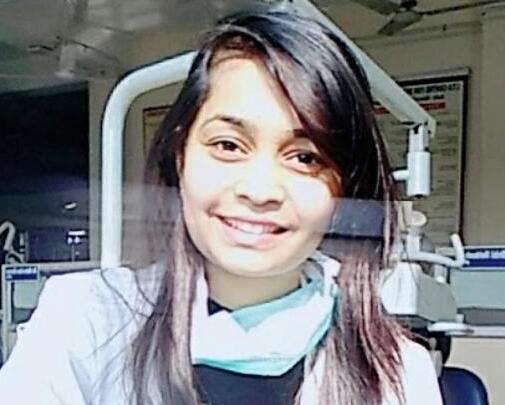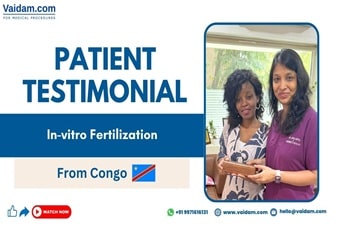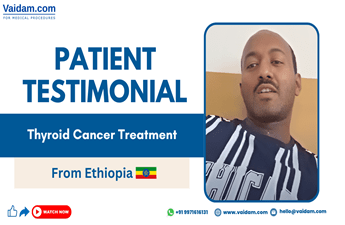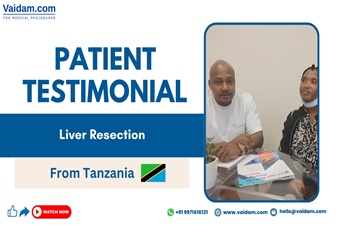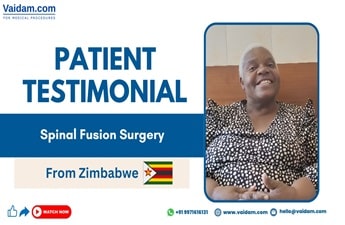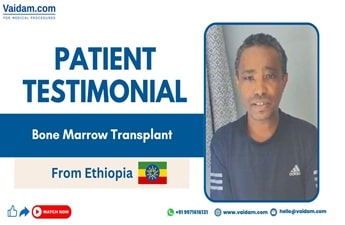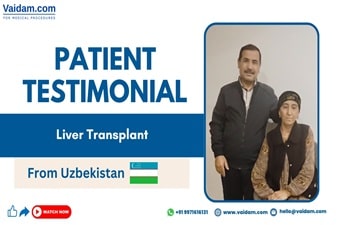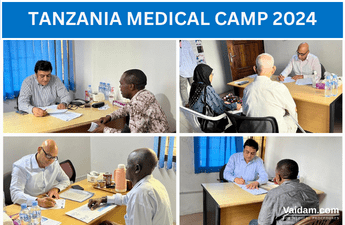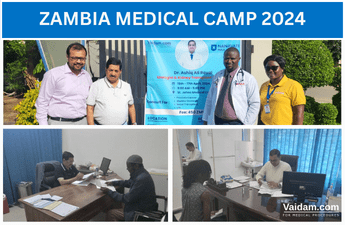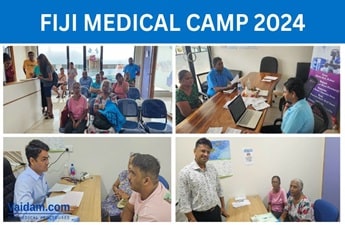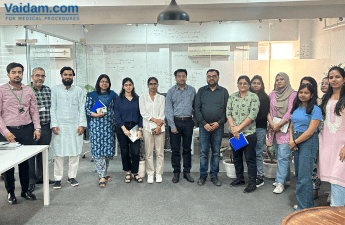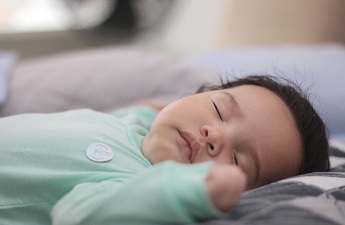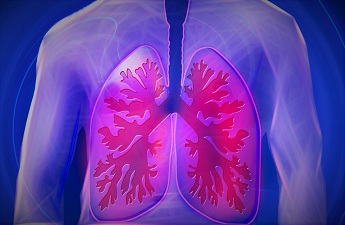HUMAN LUNGS
Lungs are a pair of large spongy, air-filled organs located on both side of the chest (thorax). Main function of chest is exchange of oxygen and carbon di oxide between the blood and air. Oxygen is very important for survival, so the lungs provides oxygen to the body and removes carbon di oxide.
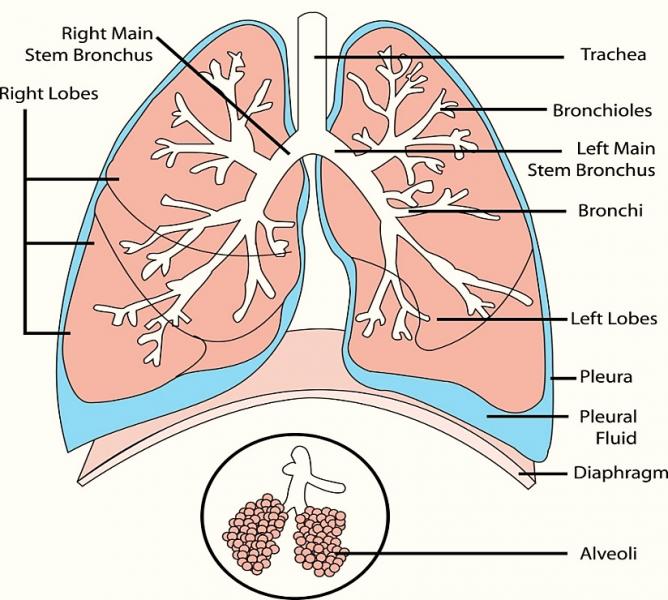
Get in Touch with Medical Experts
What is lung transplant
Lung transplantation is a surgery performed to remove a diseased and dysfunctional lung from the patient and replace it with a healthy lung from another person. Surgery can be done for one lung or for both. Lung transplants can be performed on people of almost all ages from newborns to adults up to age 65. Lung transplants are mostly performed for people who are most likely to die from lung disease within 1 to 2 years. Their conditions is so serious that other treatments, such as medicines or breathing devices, no longer work.
When is a Lung Transplant required
Mostly lung transplant is considered for people with severe, end-stage lung disease .Transplant should be recommended for someone who seems likely to die without the surgery and no other options are available. The most common lung diseases for which people undergo lung transplant are:
-
Bronchopulmonary dysplasia or chronic obstructive pulmonary disease (COPD).
-
Severe cystic fibrosis (CF)
-
Pulmonary hypertension
-
Alpha-1 antitrypsin deficiency(AAT deficiency)
-
Pulmonary fibrosis
-
Extreme Heart disease
-
Other disease: there are other conditions that can also cause severe lung damage, these include
-
Sarcoidosis
-
Histiocytosis
-
Lymphangioleiomyomatosis
-
Certain hereditary conditions can also affect the lung
Candidate for lung transplant
Candidate eligible for lung transplant:
Patients may be considered for lung or heart/lung transplantation if they present with end-stage lung disease, which also includes the following conditions:
-
No response to conservative treatment
-
Limited life expectancy (less than two years)
-
Severely impaired lifestyle and exercise tolerance
-
Oxygen dependence
-
Less than:
-
Single lung transplant : less than 75 years of age
-
Double lung transplants: Less than 70 years of age
-
Heart/lung transplants: Less than 60 years of age
Transplant Procedure
Test required before the transplant
Patient is advised to get all their previous medical records, X-rays, biopsy slides, operative reports and a record of medications to the pre-evaluation. To match and to update the previous tests, some or all of the following diagnostic test are normally performed during the evaluation.
-
Psychological and social evaluation – this test mainly include stress management, financial issues, social issues and care and support from family and friends.
-
Blood test – This is required to find a good donor match.
-
Diagnostic test – It is done to evaluate the overall health of the patient. These test include x-ray, CT scan, ultrasound, pulmonary function test, lung biopsy etc.
-
No smoking- Lung transplant recipient must stop smoking on immediate basis.
-
Other preparation- Many immunizations will be given to the recipient.
Procedure
Transplant procedure takes mostly 4 – 12 hours, which will depend on the severity of the case. It is performed under general anesthesia. Patient is asked to remove all the ornaments and change into the hospital gown provided to them. An intravenous line and a catheter are put to the patient. A catheter will be put in the bladder to drain the urine during the surgery .Constant monitoring of heart rate, blood pressure and breathing etc. are done.

-
The patient is made to lie down on the operation table,
Single transplant : Patient will be made to lie on the side of the transplant
Bilateral sequential transplant: Patient will be made to lie on their back with hands above their head.
- Incision: Is made on the chest,
Single lung transplant : incision will be made on the side where the lung has to be transplanted
Bilateral transplant: incision will be made across the chest below the breast.
- The diseased lung will then be replaced by the donor’s lung. The nerve and the blood vessel will be attached to the new lung.
-
Closure of the incision will be done with surgical sutures or surgical staplers.
-
A bandage will be put on the incision site to cover the incision.
-
Few tubes will be attached to the chest to allow the removal of fluid, blood and air from the chest.
After the transplant
Full recovery after a lung transplant differs from person to person. Depending on the case, people may leave the hospital within a week also. Minimum of 3 months is required to recover form a lung transplant. In the second month, patient needs to go for follow-up visit weekly for about four weeks.
In the ICU
-
The patient’s heart rate, blood pressure, breathing and oxygen level will be constantly monitored.
-
Catheter will stay in the bladder until the patient can pass urine on his own.
-
Blood samples will be taken several times to check the status of the new lungs.
-
Once the breathing and bladder tube had been removed one can shift to normal liquid diet and then to semi solid.
-
Anti-rejection (immunosuppression) medicines will be closely monitored by the doctors.
At home
-
Keep the incision area clean and dry and the patient must be careful while bathing.
-
There will be follow up for
-
Blood test
-
Pulmonary function test
-
Chest x-ray
-
Biopsy (lung)
Recovery
-
After the surgery, for the initial six weeks patient should avoid pushing, pulling or lifting anything heavy.
-
Patient will be encouraged to do exercises in order to build up their strength.
-
Patient should be able to drive again four to six weeks after your transplant, once your chest wound has healed and you feel well enough.
Immunosuppressants
After lung transplant, patient is advised to take immunosuppressants for the rest of his life .This is because there is a risk that body can identify the new lung as foreign organ and your immune system can attack it. This is known as rejection.
Mostly immunosuppressant therapy is done in two ways:
Induction therapy: In this therapy, patient is given a combination of high dose immunosuppressants immediately after the transplant, this will weaken the immune system. After this patient will be kept on antibiotics and antivirals to prevent infection.
Maintenance therapy: In this, the patient is given a combination of low dose of immunosuppressants. This is given as a maintenance therapy for the weakened immune system. Maintenance therapy is done for the rest of the life.
Side effects:
-
Mood changes such as depression or anxiety
-
Diarrhea
-
Insomnia
-
Swollen gums
-
Bruising or bleeding more easily
-
Convulsions
-
Dizziness
-
Headache
-
Acne
-
Extra hair growth
-
Weight gain
Report immediately to the surgeon it the patient experience
-
Fever of 104 degree or higher
-
Redness or swelling of incision
-
Blood or fluid leaking from incision
-
Increase of pain around incision
-
Short of breath or trouble in breathing
Complications
Few the known risk of the procedure are:
-
Bleeding
-
Infection
-
Blood clots
-
Blockage of the blood vessel of the new lungs
-
Blockage of the airways
-
Severe pulmonary edema
-
Rejection of new lungs
Prognosis of lung transplant
Lung transplant is a major procedure that is being performed for people suffering from life-threatening lung disease or damage. After recovery from lung transplant surgery most of the people say they do not have any restriction in physical activities. Up to people surviving for 5 years or more half of them work at least part time. Age at the time of transplant is the most important factor for the survival of the transplant.
Waiting list
Waiting time for a transplant is different for each person. Waiting time will depend on
-
The type of lung problem a patient has
-
Severity of the lung disease
-
Chances of the success of a transplant
What to do while you are in the wait list
When a patient is kept on the wait list, it is advised to remain as healthy as possible and be prepared for the transplant center to contact them any moment, day or night. It is important for the patient to inform the transplant center about any changes, like changes in health, address or contact details.
-
Follow the diet plan recommended by the doctor.
-
Stop drinking alcohol, smoking, and keep the weight in the recommended range.
-
Take the prescribed medicines regularly. Any changes in the medicines or any medical problems that are new or getting worse should be immediately reported to the concerned doctor.
-
Any exercise regime should be followed regularly
Lung Transplant Treatment in India
India is one of the most desired medical tourism destinations. It is not only because the country houses hospitals with advanced infrastructure, modern medical equipments experienced and well-established doctors but also because of the cost effective quotient of the medical treatment. It therefore, profits the international patients.
Apart from over a 100 beds the lung transplant hospitals in India, to name a few, are also equipped with modular, infection-free operation theatres, cath labs, blood banks, life-supporting ambulances, pharmacy, advanced emergency units, leisure rooms and multicuisine cafeteria.
With years of experience and research, the Indian lung transplant doctors are well-known worldwide. They recieve over a thousand international patients a year and has been successful in delivering the right treatment.
Cost of Lung Transplant in India
A lung transplant treatment in India costs around USD 30,000 which is much more affordable than what the other countries charge for the treatment.
FAQ’s
> How will a transplant change a patient’s life?
A successful transplant will improve the patient’s symptoms of lung disease. Most of the transplant patients, can do the same physical activities and have the same quality of life as a normal person. All transplant patients are recommended to follow a daily drug treatment and have a close medical supervision for their entire life.
> Is the surgery very complicated?
Surgical complications will depends on case to case.
> What is rejection?
Rejection is when a body’s immune system recognizes the new lungs as foreign and attacks them. Patient will have frequent testing and regular doctor’s appointments to monitor rejection.
> Can a person’s old lung disease return back in the new lung?
Mostly diseases do not return back in the transplanted lung. There are a few diseases that have been reported to reappear.


